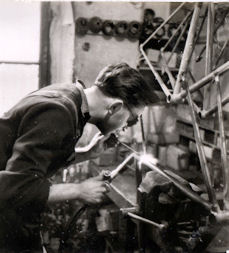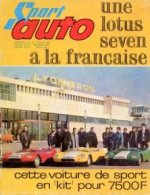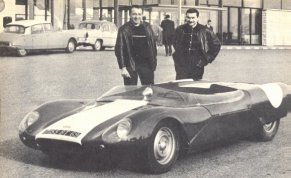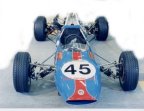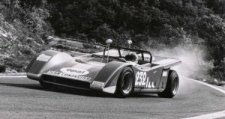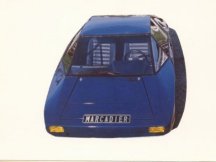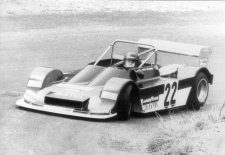
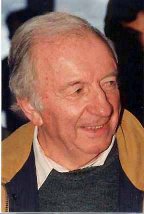
Still on only two wheels, he then switched his talents to competition motor-cycles, building frames around various engines: one of these came second in the 1957 Monza Grand Prix.
Around this time karting began in Europe, and Marcadier soon began building simple, light chassis, something which became a feature of his long and varied career. The overwhelming success, in 1961,of the team from Lyon (Verd, Dumont, Janoray) included the European endurance title.
Marcadier got together with a local-panel-beater, Marcel Founier, and together they created ’Fournier-Marcadier ’. Lat the end of 1963 they launched what was to become France's first "kit" sports car".
3600 enquiries flowed in from prospective purchasers and other interested parties. The model became a great success in competition: Sport-Auto magazine organised a championship around it.
Like the sports car, it was very light (320 kgs), with a well-designed chassis. The engine was from the Renault 8 Major, which had enough power to make the car quite lively, as testified by Jean-Pierre Beltoise in a test he did for Sport-Auto.
Very
shortly afterwards, the car was fitted with a Renault 8 Gordini engine,
and achieved several excellent results in Formula Libre in the hands
of Roger Cohen, the "works" driver. It even took overall honours against
Formula 3 single-seaters!
The commercial success of the Barzoi shouldn't detract fron its competition success: Francois Lacarrau took second place in the 1968 Grand Prix de Paris at Montlhery, against such well-known names as Servoz-Gavin, Wicky, Jungenet etc armed with Matra 470BRM, Ferrari, Porsche 906's etc !
This model, called Can-Am after the American cars which inspired its appearance, was the first of a series which allowed talented amateur drivers to have a real competition sports racer at a budget price.
In
conclusion, history will remember these models as clever designs which
allowed mass-produced mechanicals to be fully exploited. Their lightness
reflected their build quality, just as their competition success reflected
their effectiveness.
But Fournier-Marcadier's greatest contribution was to spear-head the
drive to make motor sport accessible to those on a low budget at a
time when this was not yet the French sporting priority it was later
to become.
Yesterday, the story of Fournier-Marcadier cars continues. These cars have been appreciated by car lovers and collectors from various countries, gleaning their presting in numerous classic car meetings.
